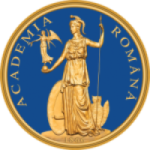Romanian dialects from the north and south of the Danube in an European context
ABSTRACT
Our project proposes to emphasise the dialectal similarities of North- and South-Danubian Romanian dialects (Daco-Romanian, Aromanian, Megleno-Romanian, Istro-Romanian) spoken in Romania, R. Moldova, Ukraine, Serbia, Hungary, Albania, Bulgaria, R. Macedonia, Greece, Croatia. Our research is based on current literature, questionnaire in Atlas Linguarum Europae (ALE), ALE dialectal archive from Institute of Linguistic “Iorgu Iordan -Al. Rosetti”, Romanian Academy, in order to have a comparison with European dialects. In this way, the concordances with the Romance languages, related, with the languages of the Balkan linguistic union, with other European languages are highlighted. The aim is to highlight the Romance nature and the unity of the Romanian language in European context. Also, the onomasiological, semasiological and motivational isoglosses drawn on the territory of the Romanian language and on the territory where the Balkan languages are spoken demonstrate a common linguistic substratum. The digitization operations are necessary. The result: an academic volume with a description of the Romanian dialects spoken in the north of the Danube (on the territory of Romania and around the borders) and in the south of the Danube accompanied by digital linguistic maps of the Romanian dialects: the linguistic atlas ALDRO. The survey network: for Daco-Romanian, 96 points from ALE network (77 in Romania; 18 in the Republic of Moldova and Ukraine; 1 in Serbia), to which are added 22 points for new field research, carried out within the RoDIAL Project (in Romania, Hungary, Serbia, Bulgaria); for the South-Danubian Romanian dialects: 22 points for new field research, carried out within the RoDIAL project in Romania, Bulgaria, Northern Macedonia, Greece, Albania, Croatia.
The project plan predicts linguistic maps for the following semantic areas: Body (including senses and illnesses); Kinship terminology; Shepherding, Cultivated plants; Animal husbandry; Weather conditions. Maps resulted from field research will be digitized and dialectal data will be included in the database, which will enable the generation of a series of language maps that will describe individual linguistic features on a phonological, morphological or lexical levels. Linguistic commentaries based on the maps, collected data and ALE archive materials will be systematized on specific dialectal topics for a complex description of the Romanian dialects.We will use on field research, to make comparisons with dialects from Europa. We will also record, using a digital recording device. At the same time, we will use modern investigation methods and techniques: audio-video equipment, IT software to automatically generate linguistic maps. The automatically processed data and maps (digitized linguistic maps, informatized collected dialectal data) will be available on website. On the basis of the linguistic archive and on the dialectal data obtained by research on field with ALE questionnaire our project will offer a rigorous overview of the Romanian dialects and dialects spoken both North and South of the Danube.
